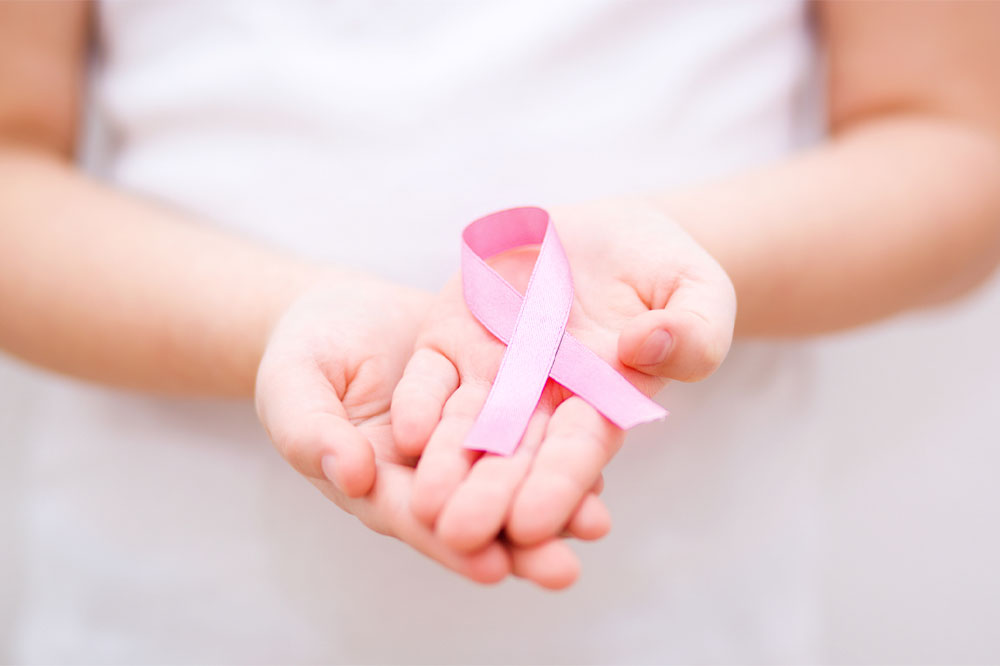Different Ways to Manage Breast Cancer and Its Symptoms
A person suffers from breast cancer when the cells in the breast grow uncontrollably and become cancerous. Breast cancer can be of multiple types. The type of breast cancer, as well as the extent of its spread, will determine the most effective treatment option. It is important to be aware of the signs since early detection can lead to better symptom management. Listed below are the common symptoms and treatment options for breast cancer.
Early signs of breast cancer
The first symptoms of breast cancer differ from one person to another. A newly discovered lump or tumor in the breast or armpit is the most typical sign.

Full or partial breast swelling
Nipple pain and discharge
Red, dry, flaky, or thickened nipple
Swollen lymph nodes
Effective breast cancer remedies
Once the doctor diagnoses the condition after evaluating the symptoms, followed by tests, the best treatment options are advised to remove or reduce the progression of cancer cells. Some options for breast cancer include:
Surgery
Lumpectomy
This entails the excision of the tumor and a thin margin of cancer-free healthy tissue surrounding it. After surgery for invasive cancer, radiation therapy to the residual breast tissue is frequently advised, particularly for younger patients, those with tumors that lack hormone receptors, and those with larger tumors.
Mastectomy
This surgery involves the removal of the affected breast. Mastectomies are of various types. Find out from your doctor if it is possible to preserve the skin, known as a skin-sparing mastectomy, or if it is possible to preserve the nipple, known as a nipple-sparing mastectomy or even a total skin-sparing mastectomy. When choosing the optimal surgical procedure for the condition, the surgeon will also consider the size of the tumor in proportion to the size of the breast.
Radiation treatment
External radiation treatment
This radiation therapy, administered from a machine outside the body, is the most popular treatment option for breast cancer. This covers both full and partial breast radiotherapy and expedited breast radiotherapy, which can last a few days rather than a few weeks.
Brachytherapy
This form of radiation therapy is administered by inserting radioactive sources into the tumor. Radiation therapy called partial breast irradiation (PBI) targets the tumor rather than the entire breast.
The time patients must undergo radiation therapy is typically reduced by directing radiation directly to the tumor. Only a select few patients, though, might be eligible for PBI. This radiation treatment option is being researched, despite encouraging preliminary findings. However, it is already a standard therapy in some situations, such as for patients with early-stage breast cancer. You might wish to discuss the benefits and drawbacks of PBI versus whole breast radiation therapy with your radiation oncologist.
Standard external-beam radiation therapy
It targets the region where the tumor was removed rather than the entire breast and can be used for PBI. PBI can also be carried out with brachytherapy by temporarily implanting a metal wand or plastic catheter in the breast. Breast brachytherapy treatments can be brief, lasting from one dose to one week. In the operating room, it can also be administered in a single dose right away following the removal of the tumor.
Early-stage metastatic breast cancer remedies
One needs to be aware of the first indicators of metastatic breast cancer signs. This is the most progressive stage of cancer which needs immediate treatment to manage its symptoms.
Chemotherapy
Chemotherapy is a treatment procedure that uses potent chemicals to kill cancer cells, typically by preventing the growth, division, and production of new cancer cells. It may be administered before surgery to minimize the size of a large tumor, facilitate surgery, and lower the chance of recurrence. Neoadjuvant chemotherapy is administered before surgery. Additionally, adjuvant chemotherapy is administered after surgery to lower the chance of recurrence.
A typical neoadjuvant and adjuvant chemotherapy regimen consists of a mix of chemicals administered throughout a predetermined number of cycles. Depending on the most effective clinical studies for that particular regimen, chemotherapy may be administered according to various schedules.
Hormone treatment
Most cancers that test positive for either estrogen or progesterone receptors respond well to hormonal therapy, often known as endocrine therapy. This kind of tumor uses hormones to drive its expansion. When hormonal therapy is administered alone or with chemotherapy, inhibiting the hormones can help reduce breast cancer symptoms and recurrence.
Biological treatment
This treatment option uses the immune system of your body to combat cancer cells or to manage the negative effects of other cancer treatments.
A strategy for detecting and treating cancer is an essential part of breast cancer control strategy. Additionally, it needs to be combined with a palliative care plan to provide people with severe cancers who are no longer candidates for treatment with enough comfort from their physical, emotional, and spiritual suffering. Its primary objective is to completely treat cancer patients or greatly extend their lives while ensuring a high quality of life.

